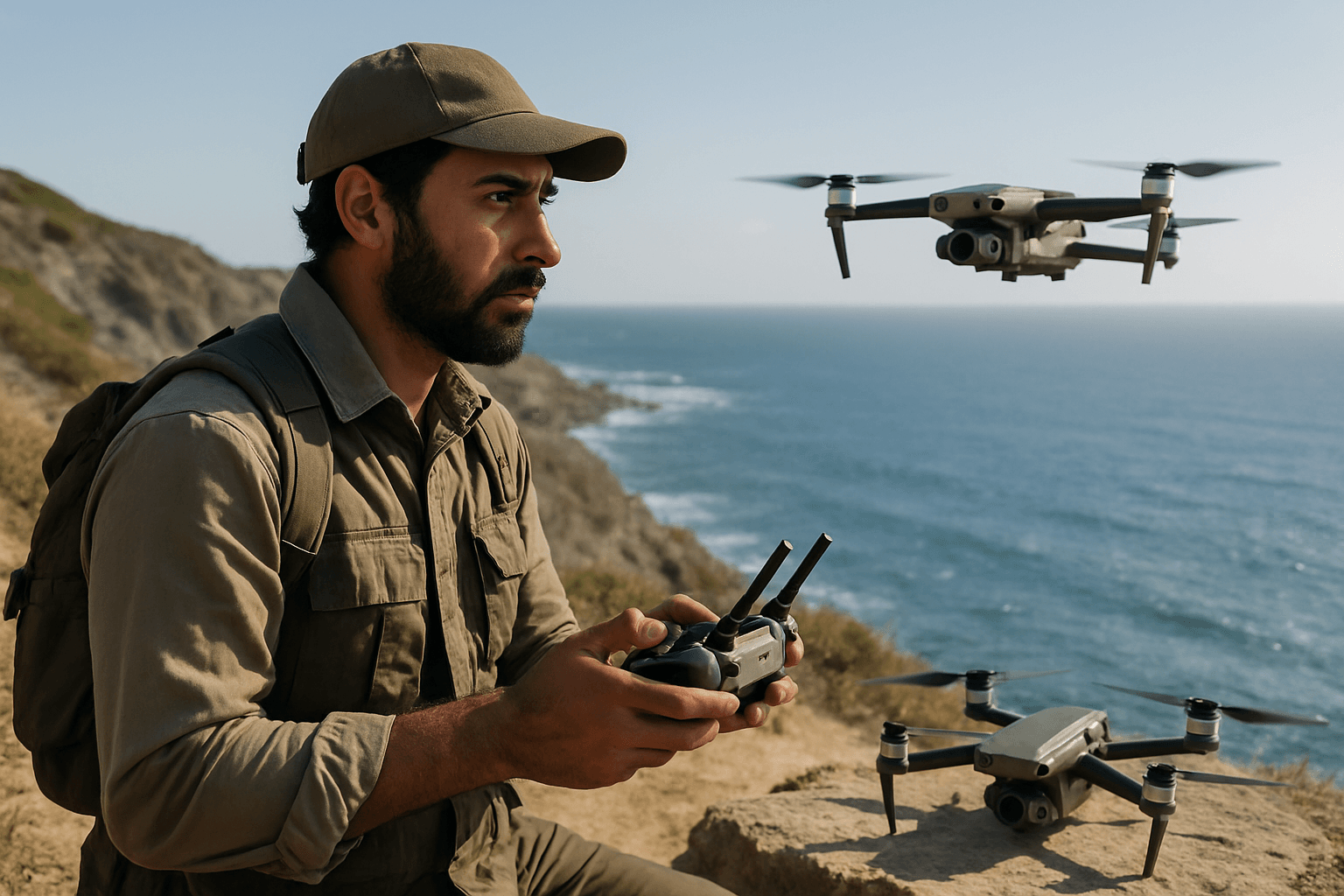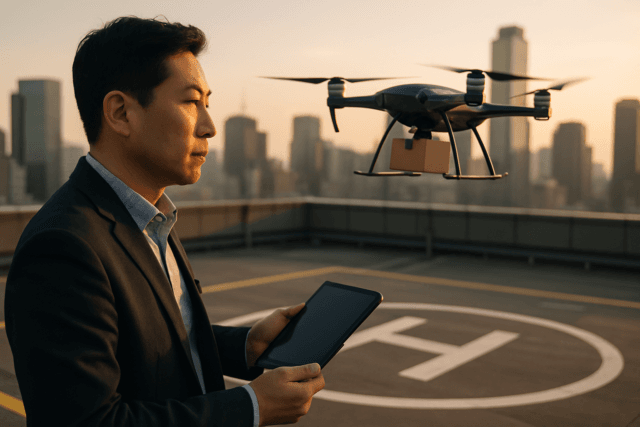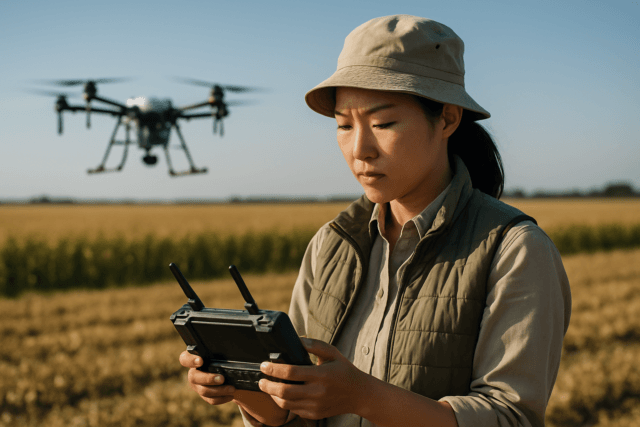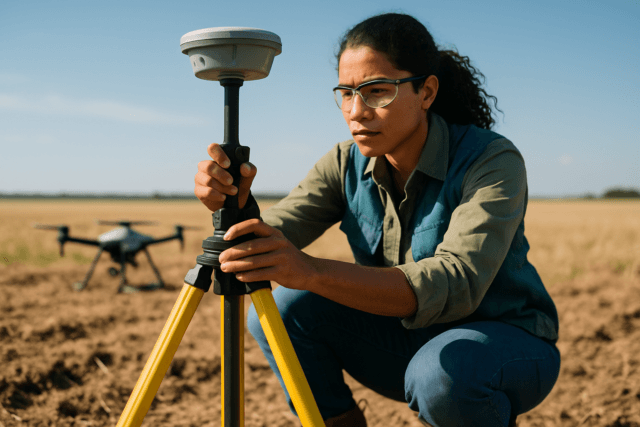The vast, enigmatic expanse of the world’s oceans presents immense challenges for researchers striving to understand and protect its diverse inhabitants. Among the most elusive are marine mammals—whales, dolphins, seals, and manatees—whose migratory patterns, population dynamics, and behaviors are critical indicators of ocean health. Traditionally, monitoring these species has been a costly, labor-intensive, and often intrusive endeavor, but the advent of drone technology is fundamentally transforming marine mammal tracking, offering an unprecedented aerial perspective that is safer, more efficient, and less disruptive to these sensitive populations.
The Traditional Challenges of Marine Mammal Monitoring
For decades, scientists have relied on conventional methods to study marine mammal populations, each with inherent limitations. Boat-based surveys involve researchers actively searching for animals from vessels, which can be expensive to operate and often create noise disturbance that alters animal behavior or drives them away. Manned aircraft surveys offer a broader view but are also costly, carry risks for human observers, and the noise from planes can still impact marine life. Furthermore, the fast airspeed of manned aircraft can lead to blurry images, making animal detection difficult.
These traditional approaches often struggle with “availability bias,” where animals are missed because they are underwater for significant periods. Accessing remote or hazardous areas, such as ice floes or rugged coastlines where pinnipeds haul out, also poses significant logistical and safety hurdles for human researchers. The data collected can be subjective, relying on observer skill and experience, which can introduce bias into species identification and counting.
The Dawn of Drone Technology in Marine Research
Unmanned Aerial Vehicles (UAVs), commonly known as drones, have emerged as a revolutionary tool in wildlife studies, offering a safer, more cost-effective, and less invasive alternative or complement to traditional methodologies for marine mammal monitoring. Drones provide an aerial perspective that reduces bias caused by animals being out of sight underwater and offers a permanent record through high-resolution imagery and video.
Types of Drones and Their Sensors for Marine Applications
The versatility of drones in marine environments stems from their diverse types and advanced sensor capabilities:
- Rotary-wing UAVs: These drones, characterized by multiple propellers, offer vertical take-off and landing (VTOL) capabilities and excellent maneuverability. They are well-suited for monitoring smaller coastal populations, detailed behavioral studies at lower altitudes (typically 20-60 meters), and can be easily launched and recovered without complex systems.
- Fixed-wing UAVs: Designed for longer endurance and faster flight speeds, fixed-wing drones are ideal for covering significantly larger areas during line-transect surveys. They are used to assess the abundance and distribution of geographically dispersed marine mammal species at higher altitudes (ranging from 75 to 735 meters).
- Hybrid Drones: Some advanced models combine the capabilities of both fixed-wing and rotary-wing, offering versatility for various tasks, and some can even seamlessly transition between air and water operations.
These platforms are equipped with a variety of specialized sensors to maximize data collection:
- High-resolution Cameras: Both still and video cameras capture detailed visual data, enabling accurate counting, species identification, and photo-identification for individual tracking.
- Thermal Imaging (Infrared Thermography – IRT): Thermal sensors are powerful tools for detecting the heat signatures of marine mammals, especially in conditions of poor visibility, at night, or when animals are difficult to distinguish from their background. This is particularly useful for species like northern fur seal pups, which are hard to count visually but show clearly in thermal images.
- Lidar Technology: While not explicitly mentioned for direct marine mammal tracking in all contexts, LiDAR can be used for detailed 3D mapping of coral reefs and potentially for habitat assessment, which indirectly supports marine mammal conservation.
- Acoustic Sensors (Hydrophones): Drones can carry passive hydrophones to detect and record marine mammal vocalizations without actively emitting sound. This allows researchers to identify species, study their acoustic behavior, and even deploy digital acoustic tags on animals for detailed individual data.
Key Benefits of Using Drones for Tracking
The adoption of drones in marine research and conservation offers several significant advantages:
- Reduced Disturbance: When flown at appropriate altitudes, drones can minimize noise and visual disturbance to animals, leading to more natural behavioral observations and reducing biases in studies of behavior, health, and abundance. Studies suggest that noise generated by small to medium UAVs is often below ambient noise levels, with limited behavioral responses from marine mammals at suitable altitudes.
- Enhanced Safety: Drones eliminate the need to put human observers in potentially hazardous environments, such as remote shorelines, rough seas, or areas with large, unpredictable marine animals.
- Cost-Effectiveness: Drones can significantly reduce the expense associated with traditional surveys, which often involve large research vessels or manned aircraft, extensive personnel, and extended field deployments. For example, NOAA Fisheries is developing drone imaging technology to reduce the cost and risk of monitoring northern fur seal populations, which traditionally required 15-22 people for up to three weeks.
- Improved Data Quality and Resolution: Drones provide high-resolution images and videos, offering more accurate sightings, precise geographical locations, and permanent records that can be reviewed by multiple experts, increasing the accuracy of species identification and reducing observer bias. They can also capture more detailed spatial data and larger group sizes compared to human observers.
- Access to Remote and Inaccessible Areas: Drones can reach locations difficult or impossible for humans to access, expanding the scope of marine mammal research into previously unmonitored habitats.
- Reduced Carbon Footprint: Compared to traditional research vessels that rely on fossil fuels, drones have a smaller environmental impact.
How Drones Facilitate Population Tracking
Drones are employed in various methodologies to track and monitor marine mammal populations:
Aerial Surveys and Counting
One of the primary applications of drones is conducting aerial surveys for abundance and distribution estimates. Drones can fly pre-programmed transects, systematically covering a study area and collecting data through videos or still images. This allows researchers to count individuals in a population, estimate group sizes, and map their distribution patterns. In some cases, drone imagery has resulted in more detections and larger group sizes than simultaneous surveys by human observers.
Individual Identification and Health Assessment
High-resolution imagery from drones enables researchers to identify individual animals through unique markings, scars, or pigmentation patterns, a technique known as photo-identification. Drones equipped with high-resolution cameras can also perform photogrammetry, capturing images from various angles to measure morphological features like body length, fin dimensions, and body volume. These biometric measurements provide valuable insights into an animal’s health, body condition, and development over time. For instance, drone morphometric measurements have been used to determine pregnancy status in bottlenose dolphin populations.
Behavioral Studies and Habitat Mapping
Drones provide a non-invasive platform for observing marine mammal behavior from an aerial vantage point, allowing scientists to study natural interactions, foraging strategies, and migration patterns without causing disturbance. This helps in understanding how animals use their habitat and respond to environmental changes or human activities. Drones can also be used for indirect applications such as habitat studies, identifying critical areas for conservation.
Biological Sample Collection
Advanced drones are being developed to collect biological samples non-invasively. For example, some drones can collect “blow samples” (exhaled breath containing mucus, DNA, and hormones) from whales, which traditionally required much closer and more intrusive approaches. Drones can also assist in guiding research vessels for more effective approaches to conduct biopsies or deploy tagging devices.
Case Studies and Success Stories
Drones are already making a significant impact in monitoring various marine mammal populations globally:
- Northern Fur Seals: NOAA Fisheries is utilizing hexacopter drones equipped with thermal sensors and high-resolution digital cameras to monitor declining northern fur seal populations in Alaska’s Pribilof Islands. Thermal imagery helps accurately count pups, which are otherwise difficult to distinguish from their background, offering a less disturbing and more cost-effective alternative to ground-based surveys.
- Whales (Humpback, Gray, Fin Whales): Drones have been used to track the migration patterns of gray whales and to assess the availability and behavior of humpback whales. In the Mediterranean Sea, drones are enhancing the study of fin whales, providing high-quality footage for behavioral observation, identification, and morphometric analysis, minimizing disturbance to this regularly found species.
- Dolphins: Rotary-wing UAVs have been used for monitoring small coastal and river dolphin populations. Drones combined with machine learning are also being explored to monitor and analyze the behavior of white-beaked dolphins, identifying behavioral patterns like traveling, milling, and respiration.
- Steller Sea Lions: Drones have been successfully used to augment annual abundance surveys of endangered Steller sea lions since 2014.
Challenges and Future Directions
Despite their immense potential, the use of drones in marine mammal tracking still faces some challenges:
- Technical Limitations: Current drone technology can be limited by battery life, especially in harsh marine environments where moisture can reduce performance. Flight duration and coverage can be restricted, though fixed-wing drones offer longer endurance. Weather conditions, such as strong winds and rain, can also interfere with drone operations.
- Data Processing: The sheer volume of high-resolution data collected by drones can be time-consuming and labor-intensive to process manually.
- Regulatory Hurdles: Operating drones in various regions requires adherence to specific aviation regulations and obtaining necessary licenses, which can vary widely.
- Environmental Impact Concerns: While generally less intrusive, the noise generated by some drones could potentially disturb marine animals, particularly sensitive species like whales and dolphins. However, many studies indicate minimal disturbance at recommended flight altitudes.
The future of drone-based marine mammal monitoring is bright, with ongoing advancements addressing these challenges:
- AI and Machine Learning Integration: Further integration of artificial intelligence (AI) and machine learning (ML) is expected to revolutionize data processing. AI can automate the detection, identification, counting, measurement, and even abundance estimation of species, significantly reducing data processing time and enhancing monitoring capabilities.
- Advanced Sensors and Drone Designs: Continued development will lead to more sophisticated, compact, and resilient drone designs with longer battery life, improved resistance to the marine environment, and enhanced sensor packages (e.g., more precise hydrophones, multi-spectral imaging).
- Real-time Monitoring: Advances in AI and communication technology are enabling real-time detection, classification, and localization of marine mammals, allowing for immediate conservation actions.
- Increased Spatial and Temporal Coverage: Future developments aim to significantly increase the spatial and temporal coverage of marine mammal studies, crucial for understanding distribution and abundance as required by international regulations.
Conclusion
Drones have undeniably transformed the landscape of marine mammal tracking, offering a powerful, non-invasive, and increasingly sophisticated suite of tools for researchers and conservationists. By overcoming many of the limitations of traditional methods, drones provide unprecedented insights into the lives of these magnificent creatures, from population counts and individual health assessments to detailed behavioral studies. As technology continues to advance, particularly with the integration of AI and more robust designs, drones are poised to play an even more critical role in safeguarding marine biodiversity and ensuring a sustainable future for our oceans.





